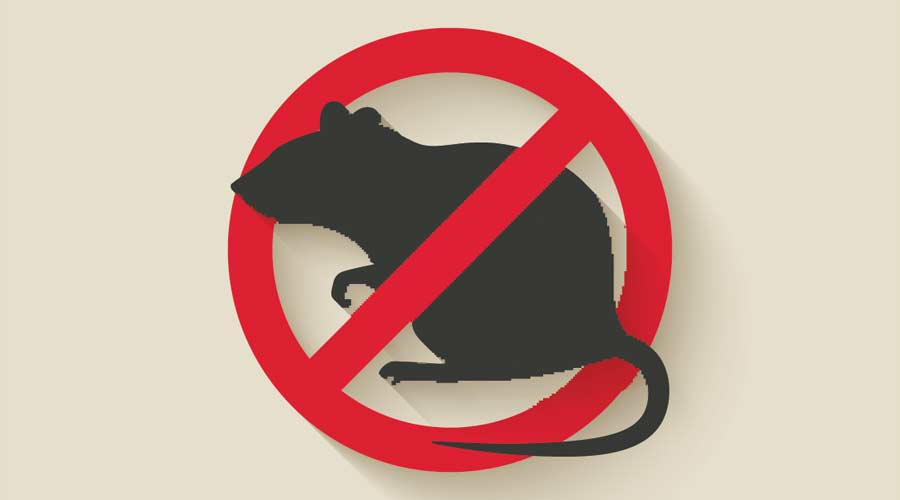
Chicago may soon need to change its name from "The Windy City" to the "Rattiest City," after topping Orkin's Top 50 Rattiest Cities List, yet again. Orkin released the list and for the eighth consecutive year, the Midwest city takes the top spot. New York beat out Los Angeles for the #2 ranking and entering the top 20 this year is Hartford, Conneticutt, taking the #19 spot, and Miami, rising three spots to secure the #20 spot.
Orkin ranked metro regions by the number of new rodent treatments performed from Sept. 1, 2021, to Aug. 31, 2022. This ranking includes both residential and commercial treatments.
1. Chicago
2. New York (+1)
3. Los Angeles (-1)
4. Washington, D.C.
5. San Francisco
6. Philadelphia (+1)
7. Baltimore (-1)
8. Cleveland, Oh. (+2)
9. Detroit (-1)
10. Denver (-1)
11. Seattle
12. Minneapolis
13. Boston
14. Atlanta (+1)
15. Indianapolis (-1)
16. Pittsburgh
17. Cincinnati (+2)
18. San Diego (-1)
19. Hartford (+2)
20. Miami
21. Milwaukee (+1)
22. Houston (-4)
23. Dallas (-3)
24. Portland, OR
25. Columbus, OH (+1)
26. Richmond (+2)
27. Kansas City (-2)
28. Norfolk (-1)
29. Nashville (+7)
30. St. Louis
31. Grand Rapids (+1)
32. Raleigh (+3)
33. Champaign (+4)
34. Albany (-3)
35. Louisville (+5)
36. Sacramento (-7)
37. New Orleans (-4)
38. Charlotte (+4)
39. Buffalo (+2)
40. Flint (-6)
41. Greenville (+3)
42. Syracuse (+4)
43. Tampa (+7)
44. South Bend (+21)
45. Portland (-7)
46. Phoenix (-3)
47. Charleston
48. Ft. Wayne (+12)
49. Orlando (+3)
50. Burlington (-11)
Each fall, mice and other rodents invade an estimated 21 million homes in the United States. They typically enter homes between October and February looking for food, water and shelter from the cold. And unique to previous years, with the influx of outdoor dining structures brought on by the pandemic, rodents have found the perfect place to dine, live and multiply, so consumers should pay extra attention to the attractants that entice rats and mice.
"Rodent infestations are among the top pest issues of the fall and winter seasons," says Ben Hottel, an Orkin entomologist. "Not only are mice and rats a nuisance, but they are known to spread a variety of dangerous diseases, including Salmonella and Hantavirus."
Beyond health issues, rodents can cause severe structural damage with their strong jaws and burrowing skills. They have oversized front teeth for gnawing, and teeth which are adapted for chewing a variety of items including electrical wires, water pipes and gas lines.
Because of the threats that rodents pose, it's important for homeowners to know how to spot an issue in order to take a proactive approach in eliminating them from their homes. A few common signs of a rodent infestation include:
• Droppings: Rodent droppings are often left behind in places where food is stored, such as kitchen cabinets or pantries, under sinks, inside chewed cardboard boxes, along baseboards and on top of wall beams
• Gnaw marks: Mice are known to bite through walls, wood and wires. The damage to wiring within walls can increase the risk for a house fire.
• Nests: Rodents prefer to nest in dark, secluded areas where there is little chance of disturbance. Be on the lookout for shredded paper products, cotton, packing materials and other fabrics, as house mice like to build nests out of these materials.
• Rub marks: Rats tend to leave dark grease or dirt marks along walls and floorboards as they follow a trail throughout the home between their nest and food.
• Strange noises: Scurrying in the walls or in the attic could mean a rodent family is present. Rodents are especially fond of attics as it's an insulated area for nest building.
The good news is homeowners can help prevent infestation troubles by taking a proactive approach in eliminating entryways into their home. To help residents avoid the potential health and safety risks associated with rodents, Orkin recommends the following tips:
• Store away food. Small crumbs and garbage are popular food sources, as are dry goods such as grains and cereals. These should be kept in sealed metal or glass containers to prevent contamination.
• Declutter. Cardboard objects prove attractive to rodents, as they tend to chew them up for use in their nests. Take advantage of your extra time at home to clean and organize crowded spaces around the house.
• Maintain your landscaping. Tall grass with adequate harborages, such as woodpiles next to the house, can be ideal habitats for rodents. Tree branches in contact with homes can also offer rodents easy access to the upper levels of your home where they may find a way into the attic.
• Inspect both inside and outside your home. Keep an eye out for rodent droppings, burrows and rub marks along baseboards and walls. The sooner rodents are detected, the better.
• Look for possible entry points. Seal any holes and cracks that are found around your home. Install weather strips around entryways, especially under doors, to help keep mice out of your home.
Using the tips above, homes across the nation can be better equipped to keep rodents out. For additional advice on pest prevention, click here.

 The Down and Dirty on Cleaning in Virus Season
The Down and Dirty on Cleaning in Virus Season How Surfactant Use is Expanding in Commercial Cleaning
How Surfactant Use is Expanding in Commercial Cleaning Clean Buildings Conference
Clean Buildings Conference